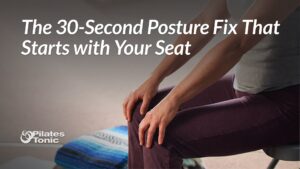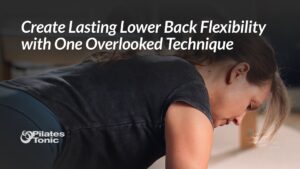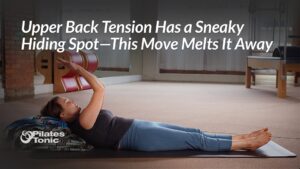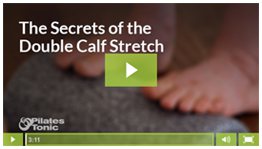Foot and ankle health equals whole body health…
When I first start working with a new client, the feet and ankles are primary areas for review. This is a core component of our work because it’s so critical to all future success in Pilates as well as life in general.
Telltale signs in the feet and ankles reveal all kinds of possible solutions to issues someone might be having.
For instance, tight calf muscles can have a negative impact on the ankles by actually trapping the fibula and preventing it from making the piston-like movement it needs to make with your tibia when you walk or run.
When this happens, it affects how your talus (ankle bone) your calcaneus (heel bone) and all the other bones in your feet function.
And if the bones in your lower leg are preventing your ankles and feet from operating like they're supposed to, ultimately, it's going to show up in your spine as some form of back pain. And that will likely lead to neck pain which creates headaches and so on. It’s a domino effect.
Because tight calf muscles are frequently the source of problems in the ankle and foot, we’re going to focus today’s video on one of the stretches I use to release the calf muscles. This stretch is one of my favorites!
Check it out, and if you try it, I'd love to hear how it goes. Just a leave a comment below.
See you in the studio,
Sydney
P.S. – If you'd like to learn how to do the fascial flossing I refer to in today's training, conveniently enough, we have a fascial flossing video which will show you this technique as it applies to your hamstrings.





6 Responses
Hi Sydney
Great stretches you’ve been showing in your recent videos. I’m always interested in the thought processes behind how people arrive at the exercises they present: can you comment on how you came up with the form points in this calf stretch?
Cheers
Hi Olivia, Optimal alignment for the foot when it’s in foundation mode (or flat), is with the first metatarsal head, fifth metatarsal head, and outside rear heel on the ground. This allows the arches of the foot to spread under the body’s weight and the bones of the feet to align. A lot of folks no longer find these points naturally because of imbalances and poor habitual movement patterns, so they develop tight areas in the feet, ankles and calves. When they perform this stretch with the foot in optimal alignment, they’ll find those tight areas. The other form point I mention in the video is for the heel to line up with the ball of the foot. When the hip is in extension, the femur bone spirals inward. Bringing the heel in line with the ball of the foot brings the femur into internal rotation. If you’d like more detail about the points through the feet, check out The Foot Training video. Thanks for your feedback and question!
Hi Sydney,
Thank you for your precise instructions. This stretch helped my calves tremendously! Thanks for all you do!
Thanks for your feedback Lena! So glad this exercise was helpful!
Hi Sydney, the feet are so important for optimal function. At Evercore Physical Therapy, I find that improving foot health often helps to reduce knee or hip pain. Thanks for sharing this article to prehab the body! – Dr. Marc Robinson, PT, DPT, Cert. MDT
Hi Dr. Marc, I couldn’t agree more! Thanks so much for sharing your feedback!